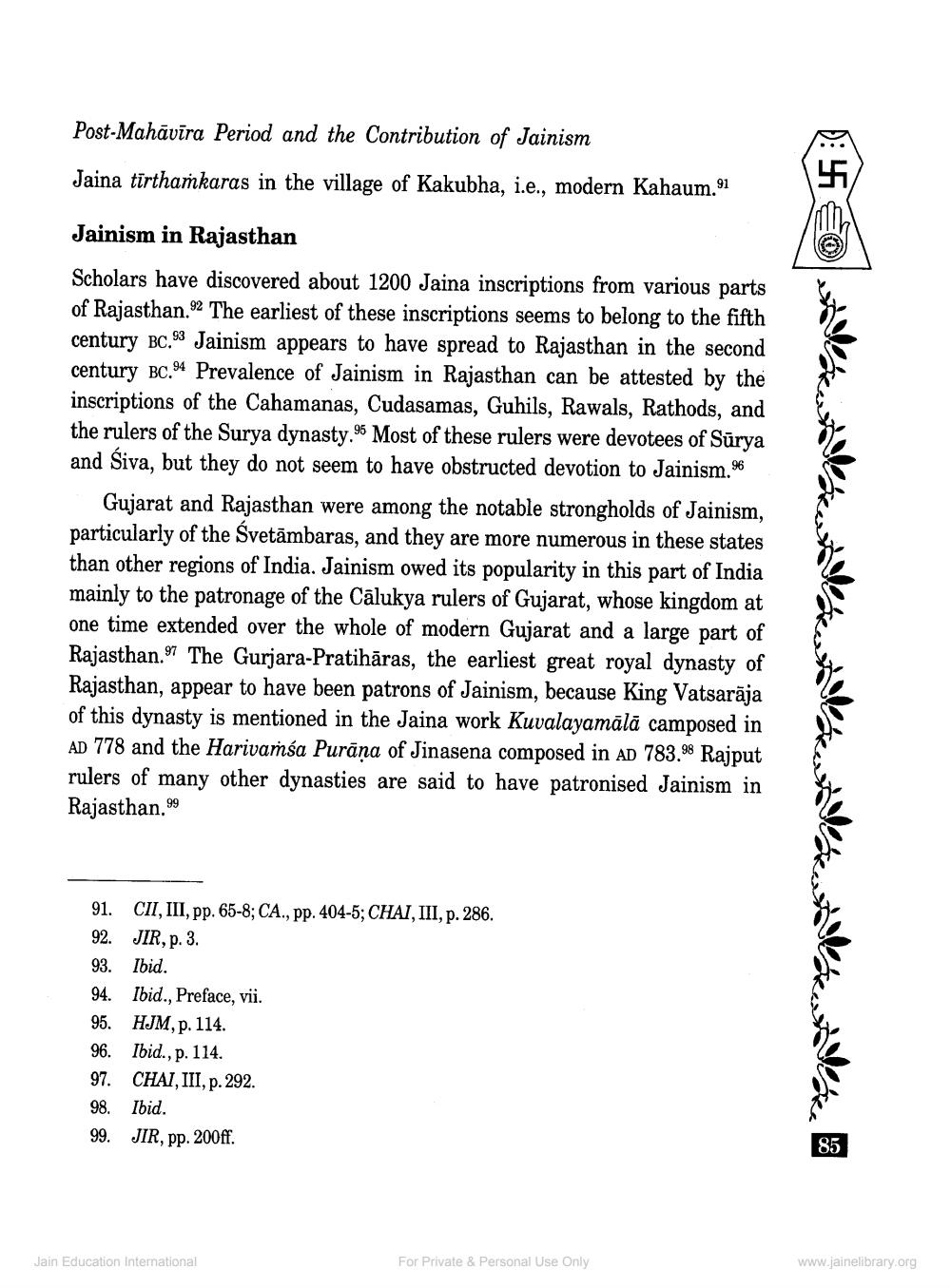________________
Post-Mahāvīra Period and the Contribution of Jainism
Jaina tīrthamkaras in the village of Kakubha, i.e., modern Kahaum. 91
Jainism in Rajasthan
Scholars have discovered about 1200 Jaina inscriptions from various parts of Rajasthan.92 The earliest of these inscriptions seems to belong to the fifth century BC.93 Jainism appears to have spread to Rajasthan in the second century BC.94 Prevalence of Jainism in Rajasthan can be attested by the inscriptions of the Cahamanas, Cudasamas, Guhils, Rawals, Rathods, and the rulers of the Surya dynasty.95 Most of these rulers were devotees of Sūrya and Siva, but they do not seem to have obstructed devotion to Jainism.
Gujarat and Rajasthan were among the notable strongholds of Jainism, particularly of the Svetāmbaras, and they are more numerous in these states than other regions of India. Jainism owed its popularity in this part of India mainly to the patronage of the Calukya rulers of Gujarat, whose kingdom at one time extended over the whole of modern Gujarat and a large part of Rajasthan.97 The Gurjara-Pratihāras, the earliest great royal dynasty of Rajasthan, appear to have been patrons of Jainism, because King Vatsarāja of this dynasty is mentioned in the Jaina work Kuvalayamālā camposed in AD 778 and the Harivassa Purana of Jinasena composed in AD 783.98 Rajput rulers of many other dynasties are said to have patronised Jainism in Rajasthan.99
91. CII, III, pp. 65-8; CA., pp. 404-5; CHAI, III, p. 286. 92. JIR, p. 3. 93. Ibid. 94. Ibid., Preface, vii. 95. HJM, p. 114. 96. Ibid., p. 114. 97. CHAI, III, p. 292. 98. Ibid. 99. JIR, pp. 200ff.
85
For Private & Personal Use Only
Jain Education International
www.jainelibrary.org




